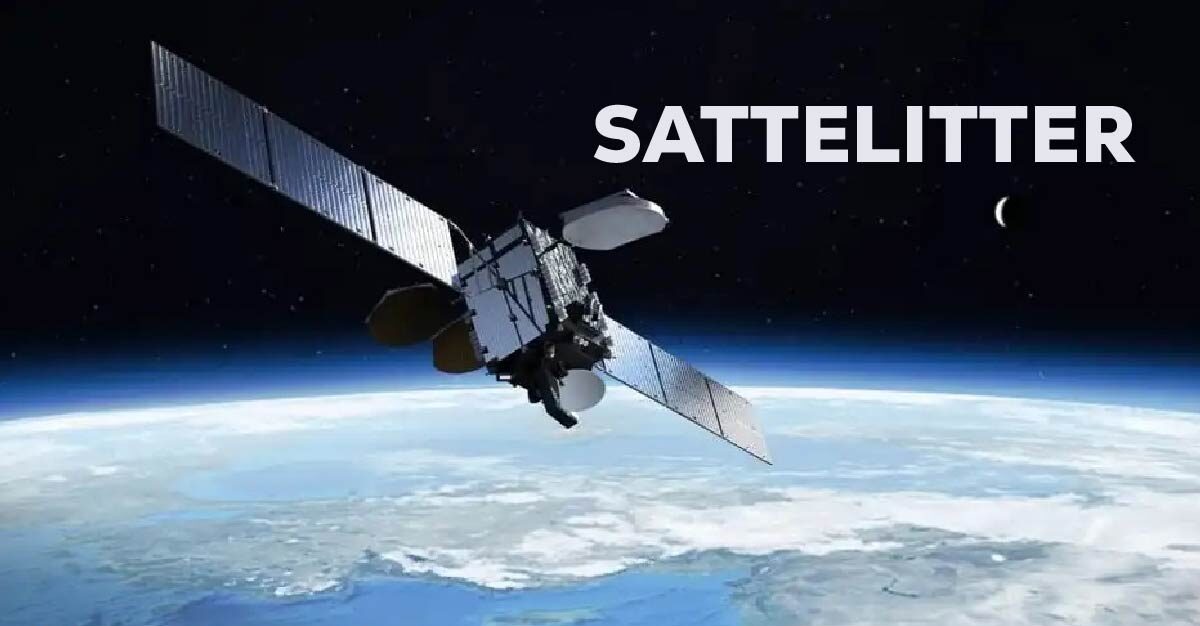Introduction to Sattelitter technology
Imagine a world where staying connected is as seamless as breathing. A world where remote villages access high-speed internet, and global communication transcends the barriers of geography. Welcome to the realm of Sattelitter technology—a revolutionary leap that promises to redefine connectivity on a global scale. As we dive into this fascinating innovation, you’ll discover how it works, its numerous benefits, and the exciting implications for different industries. The future of communication is bright with sattelitter at the helm. Let’s explore what makes this technology so transformative and why it matters to you.
How it works and its benefits
Sattelitter technology operates by deploying a network of satellites in low Earth orbit. These satellites communicate with ground stations and devices, enabling seamless data transmission across vast distances.
One of the primary benefits is enhanced global coverage. Remote areas that lack traditional internet infrastructure can now access high-speed connectivity.
Low latency is another significant advantage. Unlike conventional satellite systems, Sattelitters reduce lag time, making online interactions smoother.
Furthermore, the scalability offered by this technology is remarkable. As demand grows, more satellites can be added to improve service quality without extensive upgrades to existing infrastructure.
Sattelitter supports various applications—from telecommunication to disaster management—transforming how we connect and share information worldwide.
Advancements in satellite technology
Recent advancements in satellite technology have transformed the landscape of global communication. Innovative designs are now smaller, lighter, and more efficient than ever before. This evolution has made it feasible to launch larger constellations that provide better coverage and faster data transmission.
The integration of artificial intelligence enhances operational capabilities. Satellites can autonomously adjust their orbits for optimal performance, ensuring consistent connectivity even in challenging conditions.
Moreover, improvements in propulsion systems extend satellite lifespans significantly. These developments reduce waste and enhance sustainability efforts in space exploration.
High-throughput satellites have also emerged as game changers, offering unprecedented bandwidth at competitive prices. This advancement makes high-speed internet access available even in remote areas where traditional infrastructure is lacking.
As these technologies continue to evolve, they pave the way for innovative applications across various sectors such as telecommunications, agriculture, and disaster management.
Implications for global connectivity
Sattelitter technology is set to revolutionize global connectivity in unprecedented ways. By creating a mesh of satellites orbiting the Earth, it ensures that even the most remote locations gain access to reliable internet service.
This seamless connection breaks barriers, allowing rural communities and underserved regions to engage with the digital world. Education, healthcare, and economic opportunities are just clicks away for those who need them most.
Moreover, this technology fosters international collaboration. Businesses can operate across borders without worrying about connectivity issues. Real-time communication becomes feasible anywhere on the planet.
As Sattelitter networks expand, they also contribute to disaster management efforts. Quick access to information during crises enhances response times and aids recovery processes.
The implications stretch far beyond individual users; entire nations could thrive with enhanced global engagement powered by these innovative systems.
Potential uses of Sattelitters
Sattelitters are opening new avenues for innovation across various sectors. One promising application is in agriculture, where precision farming techniques can be enhanced. By using satellite data, farmers gain insights into soil health and crop yields.
Telecommunications stand to benefit significantly as well. Sattelitters can provide stable internet connections in remote areas, bridging the digital divide and empowering communities worldwide.
In disaster management, these satellites play a critical role in real-time monitoring of natural events such as hurricanes or wildfires. Emergency responders can act swiftly based on accurate data delivered from above.
Moreover, environmental scientists use sattelitters for climate research. They monitor changes in ecosystems and track wildlife migration patterns effectively.
Healthcare delivery could see improvements too. Remote medical consultations may become more feasible thanks to reliable internet access provided by these advanced satellites.
Impact on different industries
Sattelitter technology is poised to revolutionize various industries. In telecommunications, it enhances connectivity in remote areas. This opens up possibilities for better communication and access to information.
The agriculture sector stands to benefit significantly as well. Farmers can utilize real-time data from sattelitters for precision farming. By monitoring crop health and soil conditions, they can make informed decisions that boost yield.
Healthcare will also see a transformation through improved telemedicine services enabled by sattelitter networks. Rural patients may gain easier access to specialists without needing extensive travel.
Moreover, the transportation industry can leverage this technology for smarter logistics solutions. Sattelitter-enabled tracking systems offer enhanced route optimization and delivery efficiency.
In entertainment, global streaming services will expand their reach thanks to reliable connections provided by sattelitters, ensuring seamless viewing experiences even in underserved regions.
Challenges and controversies surrounding Sattelitters
Sattelitter technology, while revolutionary, faces several challenges and controversies. One major concern is the potential for space debris. As more satellites are launched into orbit, the risk of collisions increases. This could lead to a cascading effect known as the Kessler syndrome, where fragments from such collisions create even more debris.
Another issue revolves around privacy. With enhanced surveillance capabilities provided by sattelitters, there are fears about government overreach and data collection without consent. People worry that their movements may be tracked more than ever before.
The digital divide remains another contentious topic. While sattelitters promise global connectivity, some argue that they might exacerbate existing inequalities in access to technology and information between urban and rural areas.
Regulatory hurdles also complicate advancements in this field. Different countries have varying laws regarding satellite launches and operations, leading to confusion and potential conflicts on an international scale.
The future of Sattelitter technology
The future of sattelitter technology promises to be transformative. As advancements continue, we can expect faster and more reliable internet access across the globe.
Imagine remote areas finally getting high-speed connectivity. This would open doors for education and business opportunities previously thought impossible.
Next-generation satellite constellations will enhance coverage and reduce latency dramatically. Users may experience seamless communication, even in the most isolated regions.
Collaboration between tech giants and governments is crucial for developing this infrastructure. It’s not just a technological leap; it’s a social revolution waiting to unfold.
Moreover, as sustainability becomes paramount, innovative designs focusing on eco-friendly operations are emerging. Future sattelitters might minimize space debris while maximizing efficiency.
This evolution could redefine how we interact globally, creating an interconnected world where information flows freely without barriers or delays. The possibilities are truly exciting as we look ahead to what lies beyond our atmosphere.
Conclusion
The world is on the brink of a connectivity revolution with sattelitter technology leading the charge. As advancements continue to unfold, we see immense potential for enhancing communication and bridging gaps in underserved regions. The benefits are clear: improved global access, faster internet speeds, and innovative applications across various sectors.
Yet, as with any transformative technology, challenges do exist. Issues related to space debris, regulatory hurdles, and privacy concerns need addressing. Finding solutions will be crucial as we navigate this new frontier.
Sattelitter technology promises to redefine how we connect globally. Its impact could be profound—from facilitating remote work opportunities to enabling real-time data sharing in critical industries like healthcare and agriculture. Preparing for this shift will be essential as societies adapt to the possibilities that sattelitters present.
As satellite networks expand their reach and capabilities evolve, one thing is certain: the future of global connectivity looks brighter than ever before. With careful consideration and strategic planning, sattelitter technology can pave the way for a more connected world where everyone has a voice.

















